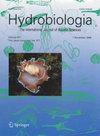Presence of parasitic forms of zoonotic importance in beach sand that affect the Parque Nacional Sistema Arrecifal Veracruzano
IF 0.3
4区 生物学
Q4 MARINE & FRESHWATER BIOLOGY
引用次数: 0
Abstract
Background. The Veracruz coastal zone in Mexico has a vast coastline where different tourist (use of beaches), economic (urban-port, commercial, and gastronomic), social, cultural, and sports activities are carried out. In Mexico, the only regulation that refers to the quality of beaches is NMX-AA-120-SCFI-2016, in which the absence of fecal matter is determined as an indicator of its sanitary quality. However, the inadequate management of fecal material in recreational beaches compromises public health and contributes to water and sand quality deterioration. Objective. To evaluate the presence of parasitic forms of zoonotic importance in the sand of the beaches of the Veracruz-Boca del Río metropolitan area that affect the Veracruz Reef System National Park. Methods. A total of 100 samples of beach sand and 19 samples of fecal matter were taken in the period from June to October 2021. The analyzes were carried out at the Boca del Río Technological Institute/Aquatic Resources Research Laboratory by the Willis flotation technique and cup sedimentation. The presence of helminths was identified and quantified as bioindicators of fecal matter contamination. Results. Of the sand samples, 28 % were positive for parasitic forms with a recovery of 112 parasitic forms, of which 67.85 % correspond to parasites of the genus Strongyloides sp. and Hookworms. 32.35 % corresponds to non-pathogenic parasites for humans. Of the fecal matter samples collected, only 42.1 % showed positivity to the parasitized forms mentioned above. Conclusions. The presence of parasitic pathogenic forms in the sand samples indicates fecal contamination, which compromises the sanitary and environmental quality of the beach sand of the Veracruz-Boca del Río metropolitan area and the Veracruz Reef System National Park.影响韦拉克鲁萨诺国家生态系统的沙滩上人畜共患病的重要寄生虫形式的存在
背景。墨西哥的韦拉克鲁斯沿海地区拥有广阔的海岸线,各种旅游(海滩的使用)、经济(城市港口、商业和美食)、社会、文化和体育活动都在这里进行。在墨西哥,唯一涉及海滩质量的法规是NMX-AA-120-SCFI-2016,其中确定不存在粪便作为其卫生质量的指标。然而,娱乐泳滩的排泄物管理不当,危害公众健康,并导致水和沙的质量恶化。目标。评估影响韦拉克鲁斯珊瑚礁系统国家公园的维拉克鲁斯-博卡德尔Río大都市区海滩沙滩上人畜共患寄生虫的存在。方法。在2021年6月至10月期间,共采集了100个海滩沙子样本和19个粪便样本。分析是在Boca del Río技术研究所/水生资源研究实验室通过Willis浮选技术和杯状沉淀法进行的。鉴定并量化了蚯蚓的存在,作为粪便污染的生物指标。结果。沙样中28 %检出寄生虫,共检出112种,其中67.85%为圆形线虫属寄生虫和钩虫属寄生虫,32.35%为非致病性人类寄生虫。在收集的粪便样本中,仅有42.1%呈上述寄生形式的阳性。结论。沙子样本中寄生致病性形式的存在表明粪便污染,这损害了韦拉克鲁斯-博卡德尔Río大都市区和韦拉克鲁斯珊瑚礁系统国家公园的海滩沙子的卫生和环境质量。
本文章由计算机程序翻译,如有差异,请以英文原文为准。
求助全文
约1分钟内获得全文
求助全文
来源期刊

Hidrobiologica
生物-海洋与淡水生物学
CiteScore
0.40
自引率
0.00%
发文量
8
审稿时长
>12 weeks
期刊介绍:
HIDROBIOLÓGICA es una publicación cuatrimestral que difunde trabajos originales e inéditos de investigación o revisión, sobre temas relacionados con los organismos y la hidrología de los ambientes acuáticos, dulces y marinos y va dirigida a investigadores de todo el mundo, interesados en las diversas disciplinas que incluye la Hidrobiología , así como a alumnos de posgrados y licenciaturas relacionados con la biología, ecología, taxonomía, filogenia y evolución de organismos acuáticos, e hidrología y oceanografía de ambientes s dulceacuícolas y marinos.
 求助内容:
求助内容: 应助结果提醒方式:
应助结果提醒方式:


